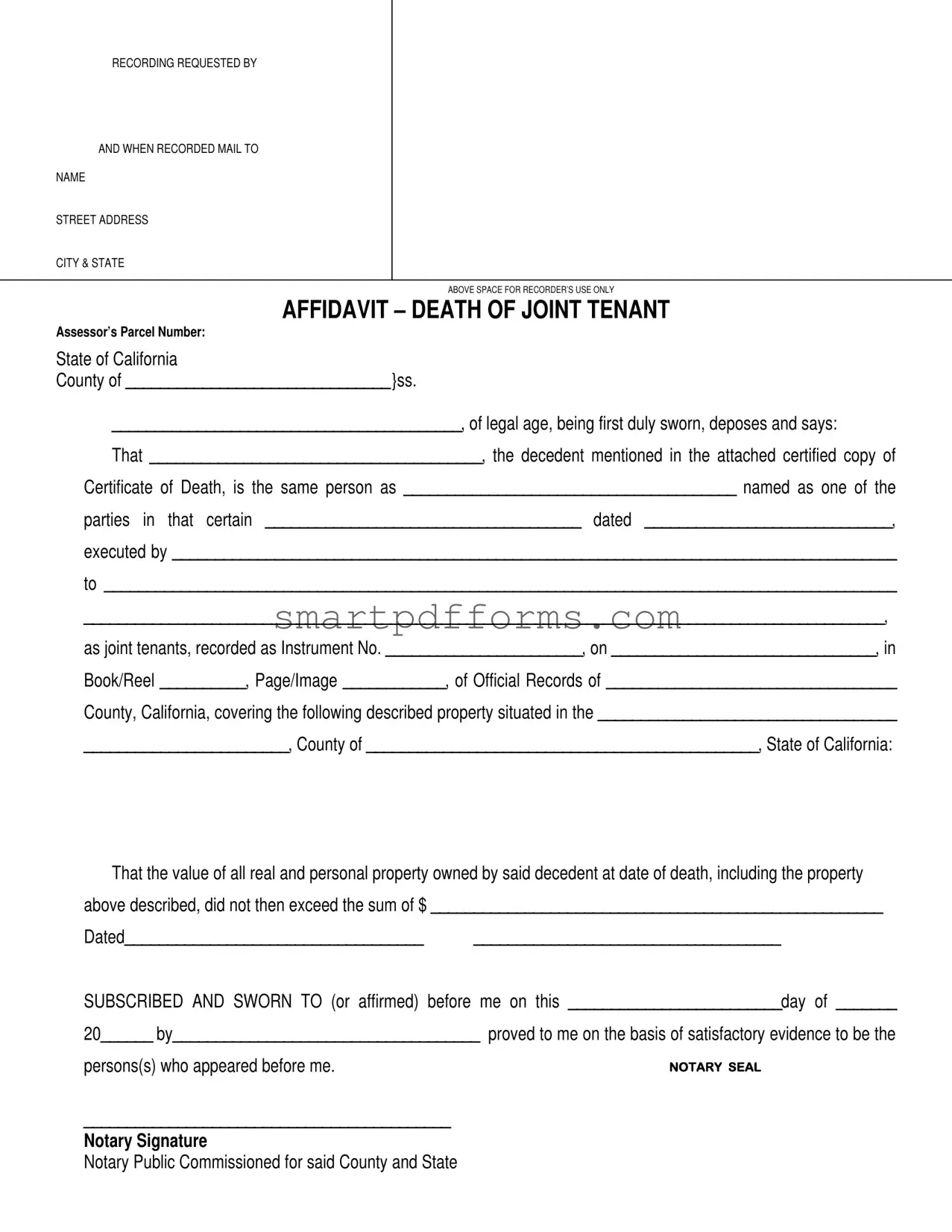NOTARY SEAL
RECORDING REQUESTED BY
AND WHEN RECORDED MAIL TO
NAME
STREET ADDRESS
CITY & STATE
ABOVE SPACE FOR RECORDER’S USE ONLY
AFFIDAVIT – DEATH OF JOINT TENANT
Assessor’s Parcel Number:
State of California
County of _______________________________ }ss.
_________________________________________, of legal age, being first duly sworn, deposes and says:
That _______________________________________, the decedent mentioned in the attached certified copy of
Certificate of Death, is the same person as _______________________________________ named as one of the
parties in that certain _____________________________________ dated _____________________________,
executed by _____________________________________________________________________________________
to _____________________________________________________________________________________________
______________________________________________________________________________________________,
as joint tenants, recorded as Instrument No. _______________________, on _______________________________, in
Book/Reel __________, Page/Image ____________, of Official Records of __________________________________
County, California, covering the following described property situated in the ___________________________________
________________________, County of ______________________________________________, State of California:
That the value of all real and personal property owned by said decedent at date of death, including the property above described, did not then exceed the sum of $ _____________________________________________________
Dated___________________________________ ____________________________________
SUBSCRIBED AND SWORN TO (or affirmed) before me on this _________________________day of _______
20______ by____________________________________ proved to me on the basis of satisfactory evidence to be the
persons(s) who appeared before me.
___________________________________________
Notary Signature
Notary Public Commissioned for said County and State

